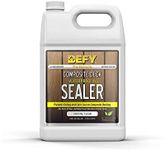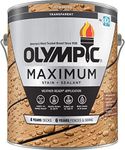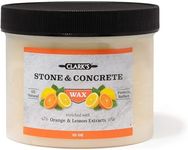Buying Guide for the Best Deck Coatings
Choosing the right deck coating is essential for protecting your outdoor deck from weather, wear, and aging. The right product can extend the life of your deck, enhance its appearance, and make maintenance easier. When shopping for deck coatings, it's important to understand the different types and features available so you can match the product to your specific needs, climate, and the type of deck you have.Type of CoatingDeck coatings come in several types, such as stains, paints, sealers, and resurfacers. Stains penetrate the wood and highlight its natural grain, while paints provide a solid color and more coverage. Sealers are clear or lightly tinted and focus on water protection, and resurfacers are thick coatings that can fill cracks and renew old surfaces. Your choice depends on whether you want to showcase the wood, change the color, or repair and protect an aging deck. Consider how much of the wood's appearance you want to preserve and the level of protection you need.
Durability and LongevityDurability refers to how well the coating stands up to foot traffic, weather, and UV rays over time. Some coatings last only a year or two before needing reapplication, while others can last several years. If your deck is heavily used or exposed to harsh weather, look for coatings labeled as long-lasting or high-durability. For decks with lighter use or in milder climates, a standard product may suffice. Think about how often you want to reapply the coating and how much maintenance you're willing to do.
Weather and UV ProtectionWeather and UV protection are crucial for preventing damage from sun, rain, snow, and temperature changes. Some coatings offer advanced UV blockers and water repellency, which help prevent fading, cracking, and warping. If your deck is in direct sunlight or exposed to frequent rain, prioritize coatings with strong weatherproofing and UV protection. For covered or shaded decks, basic protection may be enough.
Slip ResistanceSlip resistance is about how safe the deck surface is when wet. Some coatings include additives or textures to reduce slipperiness, which is especially important for decks near pools or in rainy climates. If safety is a concern, look for products that mention slip resistance or anti-skid properties. For decks in dry areas or where slipping is less of a risk, this feature may be less critical.
Ease of ApplicationEase of application refers to how simple it is to apply the coating, including preparation, number of coats, and drying time. Some products require extensive prep work or multiple coats, while others are designed for quick and easy use. If you prefer a DIY project, look for coatings that are user-friendly and come with clear instructions. If you're hiring a professional, this may be less of a concern, but it's still good to know what the process involves.
Finish and AppearanceThe finish and appearance of a deck coating affect how your deck looks after application. Options range from clear and natural to solid colors and glossy or matte finishes. If you want to highlight the wood grain, choose a transparent or semi-transparent finish. For a uniform look or to cover imperfections, a solid color or opaque finish is best. Consider your aesthetic preferences and how the deck fits with your home's style.
Environmental and Health ConsiderationsSome deck coatings contain chemicals that can be harmful to the environment or your health, especially during application. Water-based coatings are generally lower in volatile organic compounds (VOCs) and are easier to clean up, while oil-based products may offer more durability but can emit stronger fumes. If you have pets, children, or are sensitive to chemicals, look for eco-friendly or low-VOC options.











